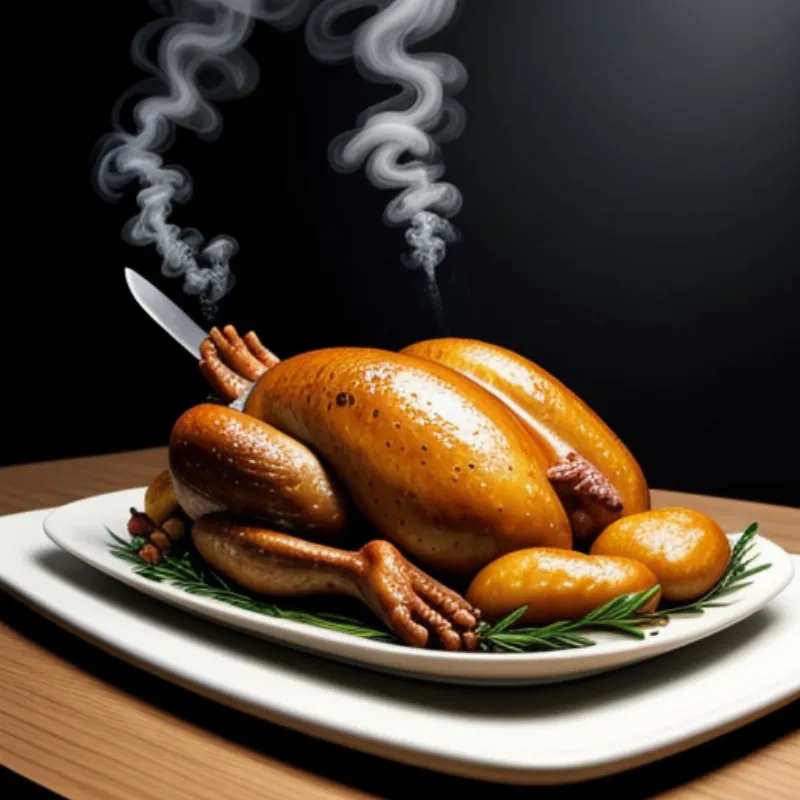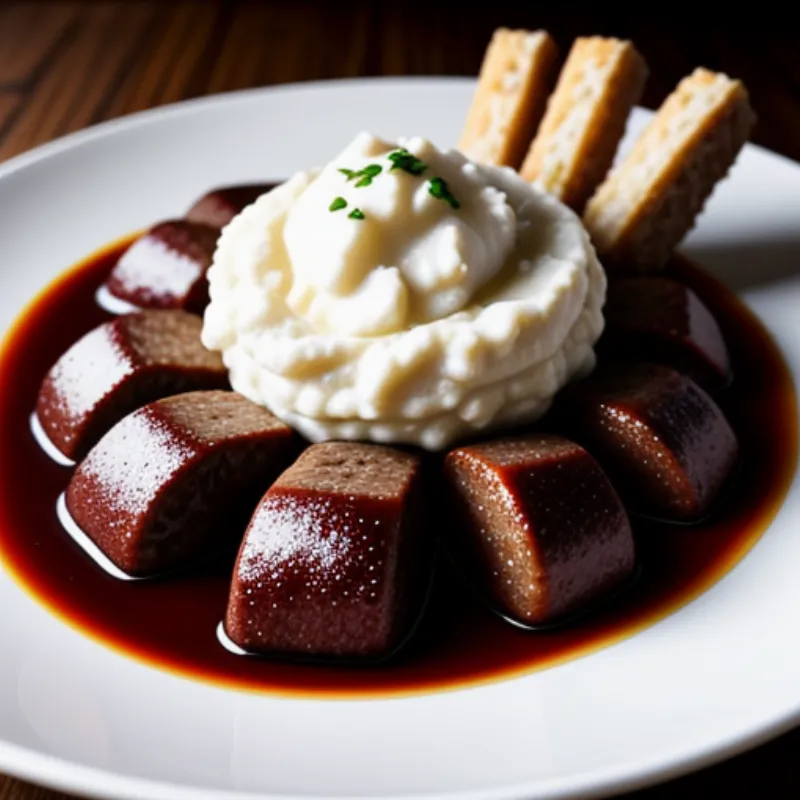Fried turkey is a true showstopper, a celebration of flavor that transforms any meal into a special occasion. It’s the kind of dish that makes your guests gasp with delight, and trust me, the compliments will be flowing faster than the gravy! While the idea of deep-frying a whole turkey might seem daunting, I’m here to tell you that with a little guidance, you can achieve crispy, golden-brown skin and incredibly juicy meat right in your backyard.
Let’s turn this culinary adventure from a “fry cry” into a “fry triumph” together!
Gathering Your Ingredients for Fried Turkey Glory
Before we embark on our frying adventure, let’s gather our culinary tools. This recipe yields a glorious fried turkey for 6-8 people.
For the Turkey:
- One whole turkey (12-14 pounds), thawed completely
- 2 gallons peanut oil, or another high-smoke point oil
- 1 gallon whole milk
- 1 cup kosher salt
- 1/2 cup brown sugar
- 4 tablespoons paprika
- 2 tablespoons garlic powder
- 2 tablespoons onion powder
- 1 tablespoon black pepper
- 1 tablespoon dried thyme
- 1 tablespoon dried oregano
- 1 tablespoon cayenne pepper (optional, for a touch of heat)
For the Flavor Injection:
- 1 cup apple cider
- 1/4 cup melted butter
- 2 tablespoons Worcestershire sauce
- 1 tablespoon hot sauce (optional)
Essential Tools for Frying Success
- Large stockpot (at least 10 gallons)
- Propane burner
- Deep-fry thermometer
- Turkey fryer stand and hook
- Disposable gloves
- Paper towels
- Large platter
The Art of Frying a Turkey: A Step-by-Step Guide
-
Brining for Ultimate Juiciness: In a large container (a cooler works perfectly!), combine the milk, salt, brown sugar, paprika, garlic powder, onion powder, black pepper, thyme, oregano, and cayenne (if using). Submerge the thawed turkey completely in the brine and refrigerate for at least 12 hours, or up to 24 hours for maximum flavor and moisture.
-
Prepping for Frying Perfection: When you’re ready to fry, carefully remove the turkey from the brine and pat it dry with paper towels. This step is crucial for achieving crispy skin.
-
Flavor Injection: In a small bowl, whisk together the apple cider, melted butter, Worcestershire sauce, and hot sauce (if using). Using a meat injector, inject the mixture into the turkey’s breasts, thighs, and legs.
-
Heating the Oil: Position your propane burner on a level, outdoor surface away from any flammable materials. Fill the stockpot with peanut oil, ensuring it reaches no more than halfway up the sides. Heat the oil slowly over medium heat to 350 degrees Fahrenheit (175 degrees Celsius), using the deep-fry thermometer to monitor the temperature carefully.
-
The Grand Frying Finale: Pat the turkey dry one last time. Carefully lower the turkey into the hot oil using the fryer stand and hook. Fry for 3-4 minutes per pound, or until a meat thermometer inserted into the thickest part of the thigh registers 165 degrees Fahrenheit (74 degrees Celsius).
-
Rest and Revel: Once cooked, carefully remove the turkey from the oil and place it on a large platter lined with paper towels to drain. Let it rest for at least 20 minutes before carving.
 Golden Fried Turkey
Golden Fried Turkey
Tips and Tricks for Fried Turkey Mastery
- Safety First: Never leave hot oil unattended, and always wear appropriate safety gear, including gloves and eye protection.
- Temperature Control: Maintaining a consistent oil temperature is crucial. Use a high-quality thermometer and adjust the burner heat as needed.
- Don’t Overcrowd: Fry only one turkey at a time to ensure even cooking.
- Let It Rest: Allow the turkey to rest before carving to allow the juices to redistribute, resulting in a more flavorful and tender bird.
Serving Your Fried Turkey Masterpiece
Fried turkey pairs beautifully with classic Thanksgiving sides like mashed potatoes, gravy, and cranberry sauce. For a touch of elegance, serve it with a vibrant vierge sauce or a rich, flavorful vin blanc sauce.
 Delicious Fried Turkey Platter
Delicious Fried Turkey Platter
FAQs: Addressing Your Fried Turkey Queries
Q: Can I use a frozen turkey?
A: For optimal results and safety, it’s essential to thaw the turkey completely before frying. Submerging a frozen turkey in hot oil can cause dangerous splattering.
Q: What type of oil is best for frying a turkey?
A: Peanut oil is a popular choice for its high smoke point and neutral flavor. Other suitable options include canola oil, vegetable oil, and safflower oil.
Q: How do I know if the oil is hot enough?
A: Use a deep-fry thermometer to accurately gauge the oil temperature. The ideal temperature for frying turkey is 350 degrees Fahrenheit (175 degrees Celsius).
Q: Can I reuse the frying oil?
A: Yes, you can strain the oil through cheesecloth or a coffee filter after it has cooled completely. Store it in an airtight container in a cool, dark place for up to 3 months.
From Our Family Kitchen to Yours: Embracing the Joy of Fried Turkey
Frying a turkey is an experience that goes beyond the delicious end result. It’s about creating memories, sharing laughter, and savoring the flavors of tradition with loved ones. I encourage you to gather your family and friends, fire up the fryer, and embrace the art of creating this culinary masterpiece. Don’t forget to share your fried turkey triumphs with us in the comments below!
